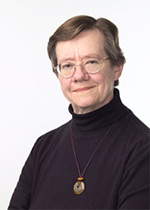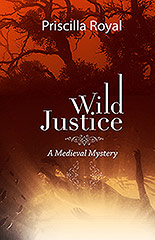 Ann Parker is one of my favorite historical mystery authors. Her critically acclaimed and award-winning Silver Rush historical mystery series is published by Poisoned Pen Press. During the day, she wrangles words for a living as a science editor/writer and marketing communications specialist (which is basically a fancy term for “editor/writer”). Her midnight hours are devoted to scribbling fiction.
Ann Parker is one of my favorite historical mystery authors. Her critically acclaimed and award-winning Silver Rush historical mystery series is published by Poisoned Pen Press. During the day, she wrangles words for a living as a science editor/writer and marketing communications specialist (which is basically a fancy term for “editor/writer”). Her midnight hours are devoted to scribbling fiction.
Needless to say, I was thrilled when she said she would write a guest blog for me.
Welcome, Ann!
Tell us about A Dying
Note.
In this, the sixth book in the Silver Rush historical
mystery series, my protagonist Inez Stannert and her 12-year-old ward Antonia
have relocated to San Francisco. When the book opens, it is autumn of 1881,
about one year after Inez and Antonia departed from Leadville, Colorado. Inez
is now managing a music store and is focused on building a new life for herself
and her ward. That life threatens to tumble about their ears when the
badly beaten body of a young musician washes up on the filthy banks of San
Francisco’s Mission Creek canal. Inez and Antonia become entangled in the
mystery of his death when the musician turns out to have ties to Leadville,
ties that threaten to expose Inez’s notorious past.
Why did you take Inez from Leadville to San Francisco?
It was a natural development for the series, although it
took me by surprise. I can’t say I’d planned all along to bring Inez all the
way to the West Coast. However, looking back, I realize I had been building
toward that possibility from the very first book, Silver Lies.
In Silver Lies and
in subsequent books, Inez muses upon how she, her husband, and their business
partner ended up settling in Leadville, Colorado. The silver-rush boomtown of
Leadville was only supposed to be a “quick stop” along the way to their
ultimate destination: San Francisco. But, once Inez’s husband won the Silver
Queen Saloon in a high-stakes poker game in Leadville, the three of them
decided to stay a while and make money by “mining the miners.” Ensuing events
conspired to make that “while” a semi-permanent situation. In What Gold Buys, the fifth of the
series, Inez is finally free to do as she wishes. As I wrote the draft of that
book, Inez made it very clear to me that she was going to complete that interrupted
journey. (Those characters! Sometimes they just insist on going their own way,
despite their creators!)
Was it difficult for Inez, or any independent woman, to run
a business in San Francisco by herself?
I was surprised (and pleased) to discover in my research
that entrepreneurial activity was alive and well amongst the “fairer sex” in
historical San Francisco. I found two items of great help in my research into
this topic: Edith Sparks’ book Capital
Intentions: Female Proprietors in San Francisco, 1850-1920, and Mary Lou
Locke’s PhD thesis ‘Like a Machine or an
Animal’: Working Women of the Late Nineteenth Century Urban Far West, in San
Francisco, Portland, and Los Angeles. (Ms. Locke also writes the Victorian
San Francisco mystery series under the name M. Louisa Locke.) I discovered that
San Francisco women took on the roles of hotel and boardinghouse keepers, laundresses,
restaurant and saloon keepers, merchants, dealers, peddlers, dressmakers,
milliners, seamstresses, bakers, and more.
One thing I hadn’t considered before looking into this book
was the role of marital status. According to Sparks, “… for female business
owners, the intangible rewards of small-business proprietorship [these rewards
included independence and personal fulfillment] drew only certain kinds of
women—those never-married women not legally bound to the care of home, husband,
or children.” As long as a woman had drive and capital, she had a chance. So,
yes, independent women did step out on their own into the business world. Granted,
the numbers of women taking this step was not large in the population as a
whole: in the 1890 census, only 6% of all single women in the city’s labor
force were listed as business proprietors.
When A Dying Note
opens, Inez is manager, not an owner, of the D & S House of Music and
Curiosities. However, she is angling for a business partnership on equal terms
with the owner, violinist Nico Donato, and even muses about perhaps eventually
buying the business from him.
Why did you decide to make music such an element of this
book?
Music has always been a running thread throughout the
series. I love music, it speaks to me although I am no musician! Music runs
through my family, though (both parents played piano, one brother is a
professional woodwind musician, and another is an accomplished drummer). When I
considered what Inez could do in San Francisco, work-wise, I thought about and
discarded the idea of her buying/running a saloon—she pretty much fell into
that line of work in Leadville, thanks to her husband and his business partner.
Coming into a new city, an unknown, she would, I believe have had a rough go in
that profession. Too, Inez now has Antonia to consider. Raising a young girl in
such an environment would not be to Inez’s liking.
Given that I had made Inez a pianist from the very beginning
(partially as a homage to my family roots, and partially so I could enjoy
exploring that world through words), it seemed a natural to position her in the
music world in some “steady” occupation. The idea of creating a plot focused on
the music world arose from that. Also, I was interested in exploring the labor movement
in San Francisco during this timeframe, so I wondered: What were the city’s
musicians up to, in terms of labor activities and organization in the late
1870s and early 1880s? What I found out intrigued me, so I proceeded from
there.
De Bruijn is a fascinating character. How did he approach
you as a potential character and why did you agree?
De Bruijn was a surprise. He popped up in the previous book,
What Gold Buys, at the end. Where he came from, I truly have no idea (from the
subconscious somewhere), but I liked him and his straightforward and considered
ways, so I let him “have his say.” He had such a different “voice” from Inez
and from Antonia, I felt he was a good counterbalance to them. I’m always up
for an experiment, so I decided to give him a prominent role in A Dying Note, and see how it worked out.
I was pleased with the results, so he stays… for now! One can never say for
certain what the future holds, but at this point I foresee a role for him in
subsequent books.
What’s next?
Next, another book set in San Francisco. There’s much to
explore! However, I assure Colorado and Leadville fans I have not abandoned them.
I already have plans for a future book in which Inez will journey back to the
city in the clouds.
How can readers contact you?
The best way is through my website (which has contact
information here).
You can also find me rattling around on Facebook
and Pinterest,
and scratching my head over the mysteries of Twitter.Visit http://www.annparker.net for more information. For more about the books in general and A Dying Note in particular, please visit the Poisoned Pen Press website.





Hi Priscilla! Thanks for hosting me here on your bright and shiny new blog, and thanks for your questions... It's always fun to talk about writing and how things "come to be!" :-)
ReplyDeleteLooking forward to seeing you at Left Coast Crime, very soon now!